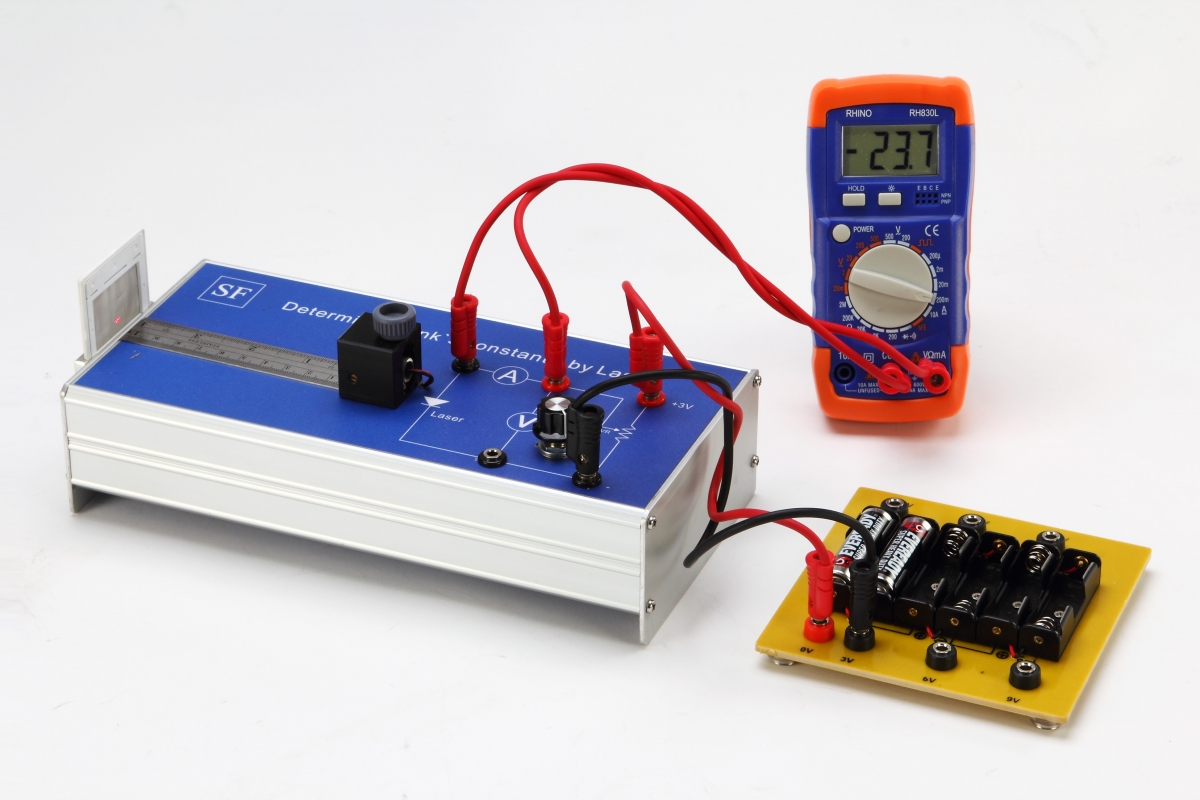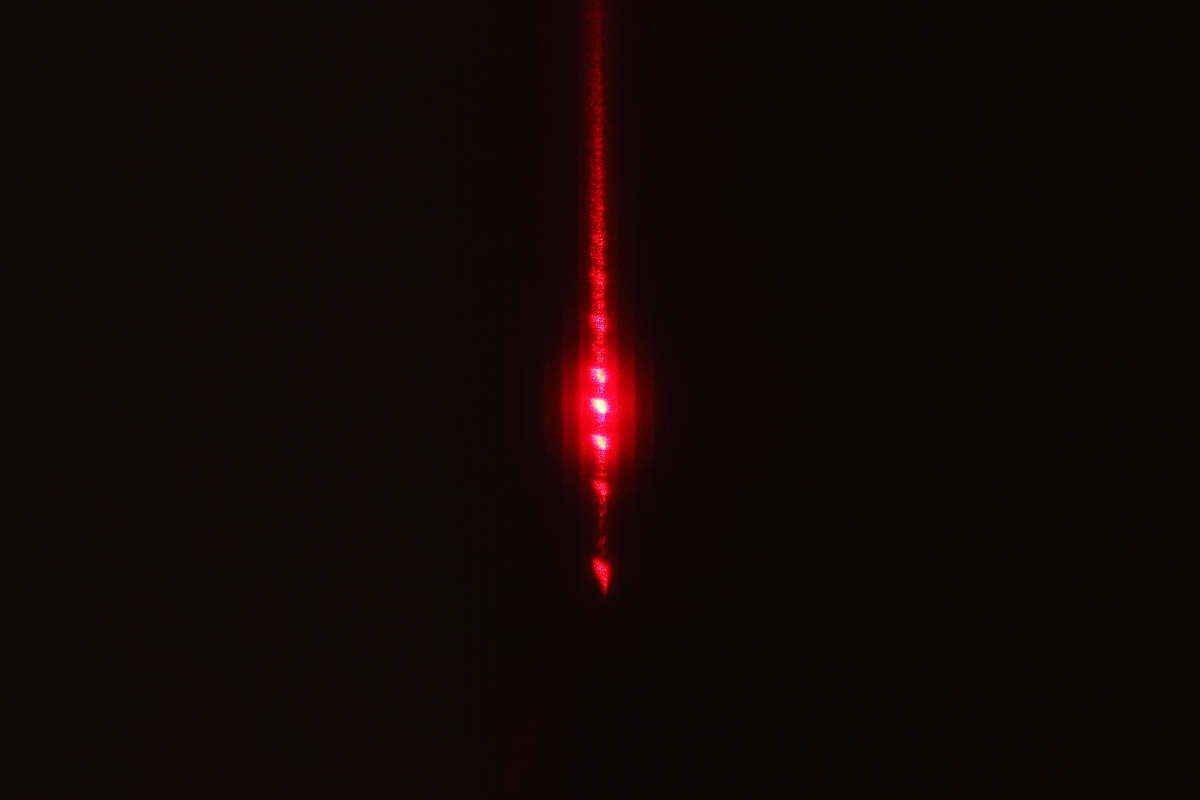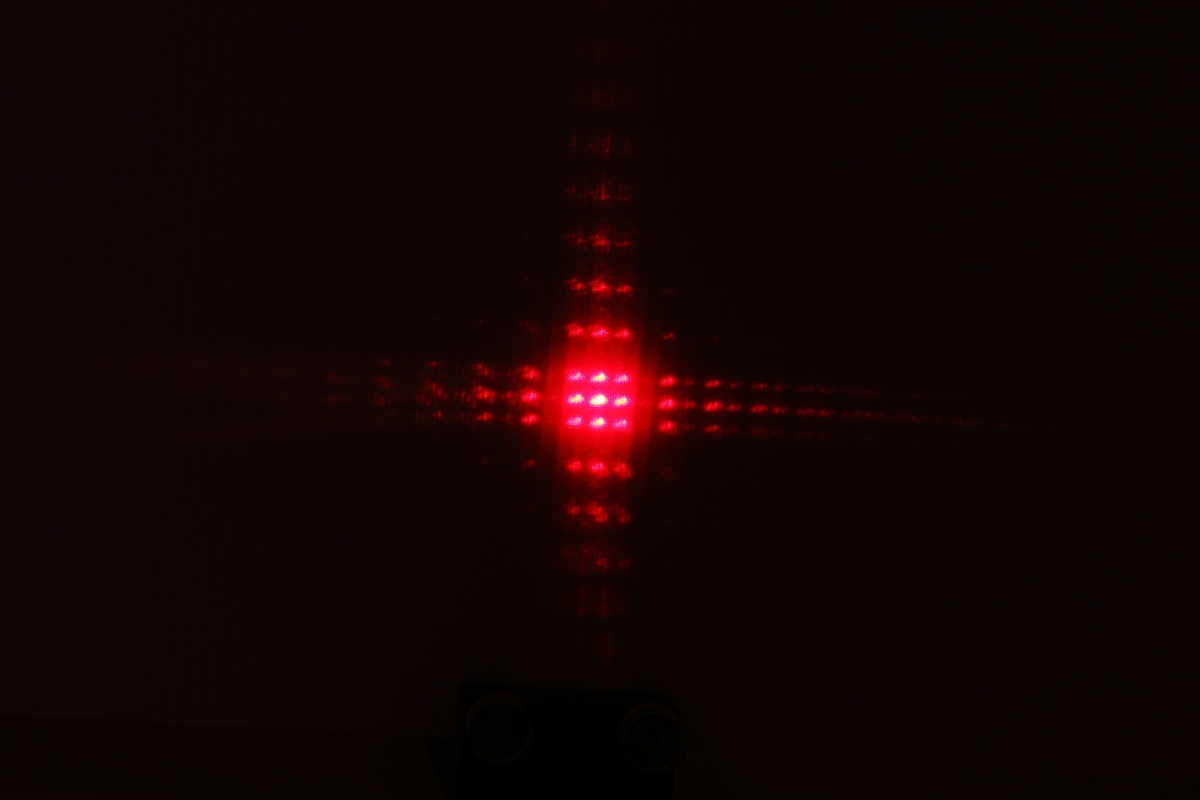Item no.: F22
Introduction
Rather than the energy continuity considered in classic physics, the energy level of a photon or an electron, viewed from quantum theory, exhibits an integer multiple of hf (here h is planks constant and symbol
of f indicates the frequency of light wave). That means a light is emitted from or absorbed by an electron and the energy, hf, will be quantized. While laser light is irradiated to a light-emitting diode, the induced current will be further retarded due to weaker forward voltage unable to overcome the energy barrier, i.e., most electrons are still constrained in depletion layer. However, a current of fast growth starts being induced if potential supplied V0 is just adequate to break through the barrier. Thus planck’s constant h might be determined from the equivalence of energy emitted from laser diode, hf, and power absorption of photon e ( V-V0).
Objectives
- Measure the Laser’s wavelength by reflective diffraction or grid diffraction.
- Utilize the V-I characteristic of diode Laser to find the emitted voltage.
- Determining Planck’s constant.
Experiment—Laser wavelength by Reflective diffraction
Base on the pattern of interference fringes reflected from the multi- gratings on steel straightedge, the wavelength of laser might be determined. Here the bright fringes occurs at δ=dCosθ -dCos(θ +φ n )=nλ where f= vc/λ
Experiment—V-I characteristic of diode laser
Base on V-I characteristic profile accessed from diode laser, an approximated equation following the linear behavior might be given. Here Vo, an interested point of linear equation and horizontal axis ( induced current), indicates the breakdown voltage of diode laser. And then the estimated planck’s constant h, yielded below, is close to the result measured by Millikan (1916).
實驗項目:
- 測量半導體雷射波長
- 推算半導體雷射截止電壓
- 推定普朗克常數
實驗器材:
- 半導體雷射3V及俯角調整器 x1
- 半導體V-I 特性實驗模組 x1
- 短鋼尺x1
- 400孔/2.54 cm不鏽鋼網光柵片x1
- 三用電錶 x2
- DC 電池盒 x1
- 導線 x4



